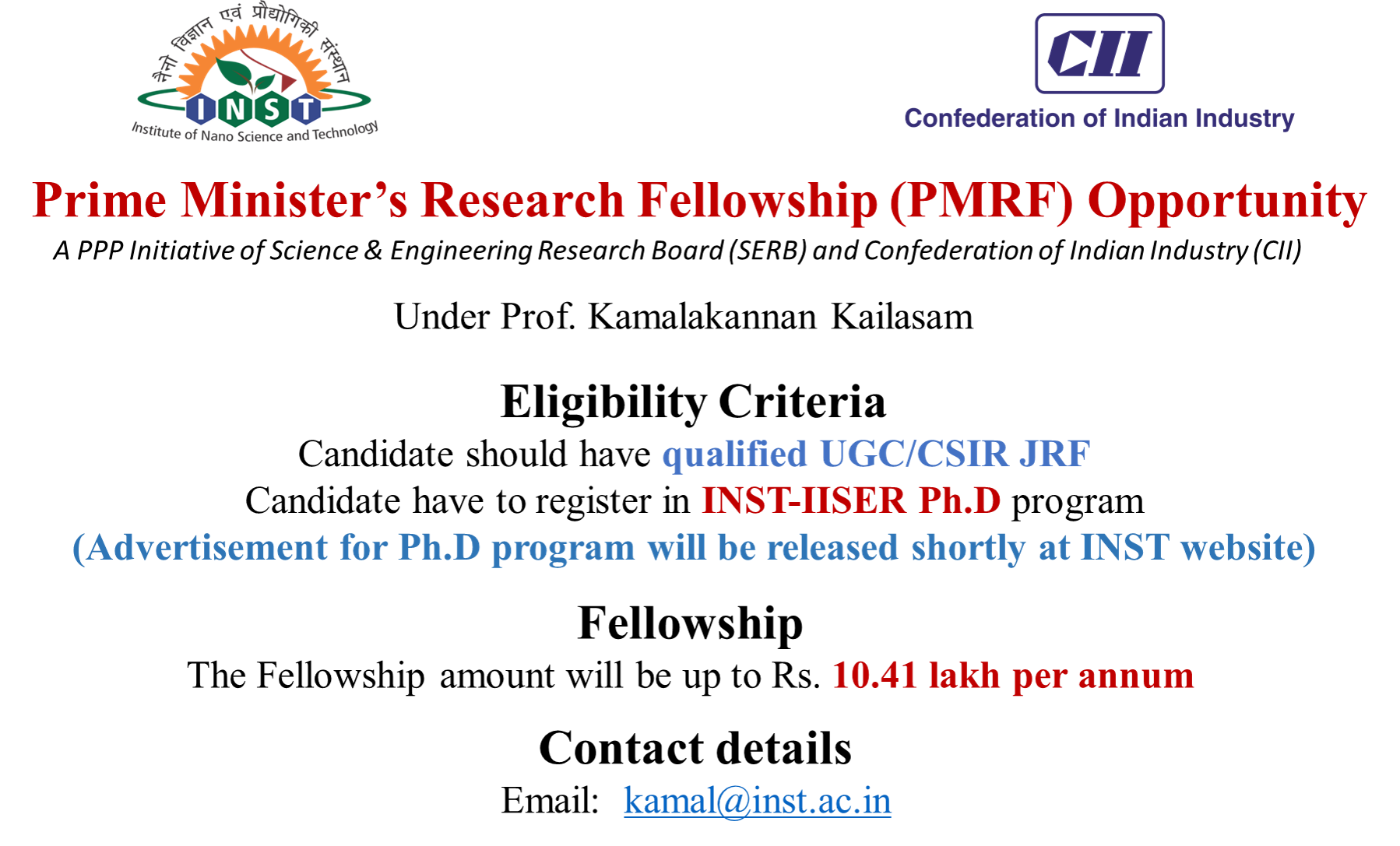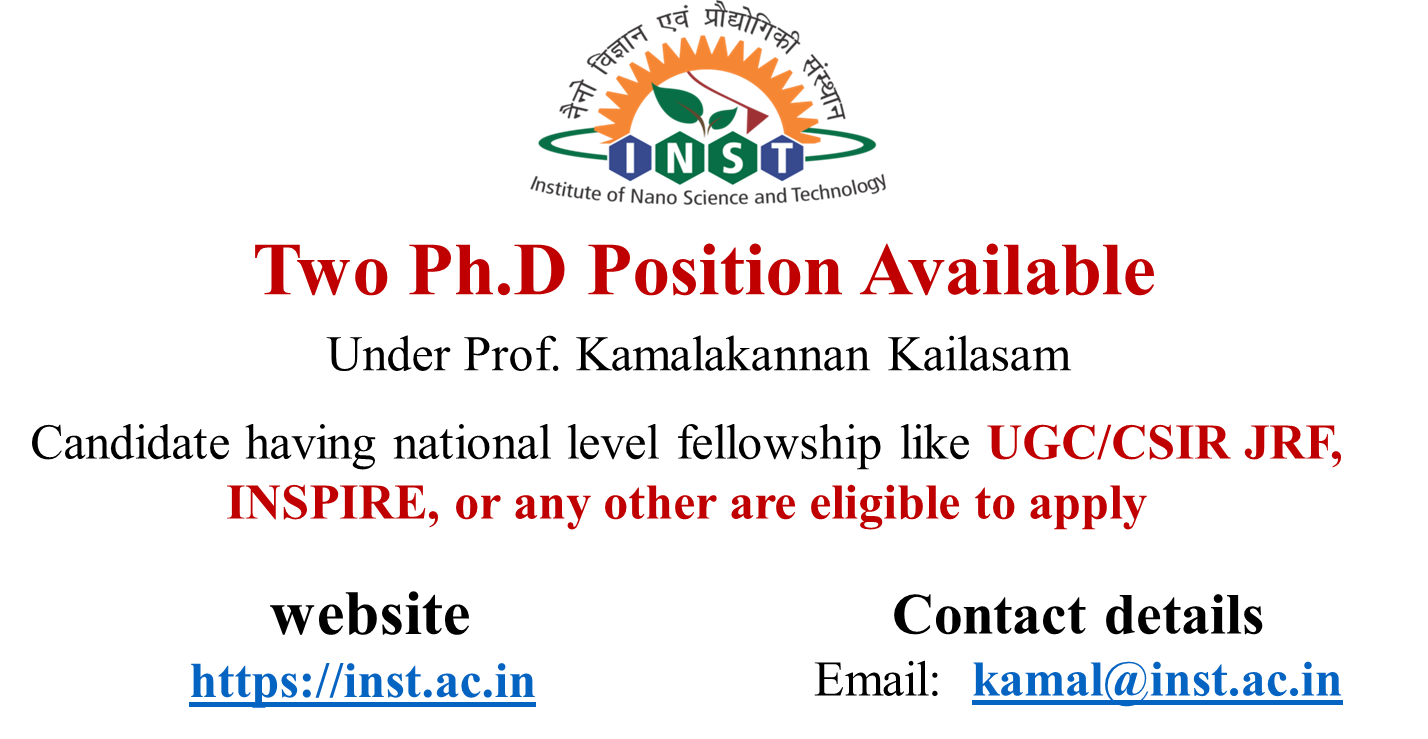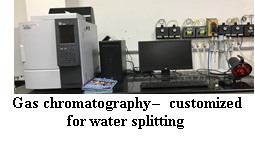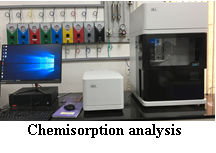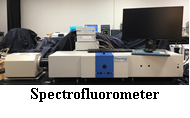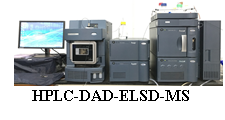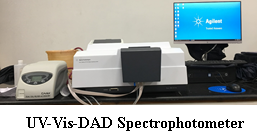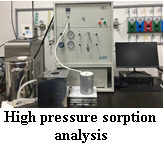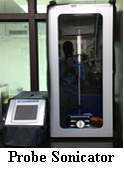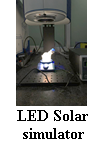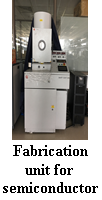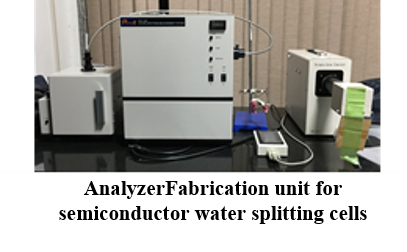Faculty Directory
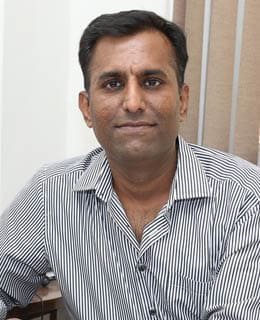
Dr. Kamalakannan Kailasam
Professor, Scientist-G
Advanced Functional Nanomaterials Energy and Environmental Applications like photocatalytic water splitting, gas storage, CO2 conversion, fine chemicals production, Environmental Remediation-water purification, photovoltaics, fuel cells and batteries. Conversion of Biomass to porous carbon based materials, Chromatographic and Biotechnology applications
Contact Information :
-
Email:
kamal@inst.ac.in -
Google Link:
Google Link
-
Advanced Functional Nanomaterials for Energy and Environmental Applications like water splitting, CO2 conversion, gas storage, fine chemicals production, photovoltaics, fuel cells and batteries.
My approach mostly depends on creating porosity in functional organic and inorganic materials by soft and hard templating approaches and their extensive characterization. In addition building the organic porous network by reacting special tectons and avoiding their packing in such a way that it opens up the porosity, for eg., in Covalent Organic Frameworks (COFs). As the further step, to fulfil like every scientists dream, of extending the research results to develop technology by prototype devices and towards industrial applications:
♦ Conversion of water resources to fuels by solar energy: Porous heptazine and triazine based polymeric carbon nitride and mesoporous WO3 and BiVO4 semiconductors for photocatalytic and photoelectrochemical visible light water splitting and organic conversions.
♦ Storage of H2, CO2 and CH4; capturing and conversion of green house gases (GHGs) like CO2: Covalent Organic Frameworks (CTFs, Covalent Triazine Frameworks), Mesoporous melamine resins and Polymeric carbon nitrides
♦ Conversion of Biomass and CH4 to value-added fuels: Porous mixed metal oxide and metal nanoparticle supported SBA-15, MCM-41 and mesoporous zeolites. Hydrothermal Carbonization (HTC) of the biomass into functionalised carbon materials.
♦ Electrochemical applications: Porous hetero atom doped carbons from renewables, graphene/CNT carbon nitride composites, CTFs, mesoporous metal oxides for Fuel cells, Batteries and Supercapacitors
♦ Chromatographic applications: Various morphological forms, like M-MCM-41 (e.g., M = Ti) silica spheres grafted with functional chains for on-column catalysis and separation using HPLC/GC techniques
♦ Environmental Remediation-water purification: Carbon nitride polymers – removal of toxic/heavy elements from polluted water, photocatalytic adsorption/degradation of dyes and other organic pollutants from industrial wastes♦ Biotechnology applications: Porous carbon nitrides as Fluorescence nanoprobe in biosensing and bioimaging applications. Multi-functionalized ordered porous spherical silicas as drug-delivery systems.
Current Group Members
-

SRISHTI
Email: srishti.ph25201@inst.ac.in
Reg. No.: PH25201
-

PALLAVI SHARMA
Email: pallavi.ph24204@inst.ac.in
Reg. No.: PH24204
-

MR. JATIN MAHAJAN
Email: jatin.ph22223@inst.ac.in
Reg. No.: PH22223
-
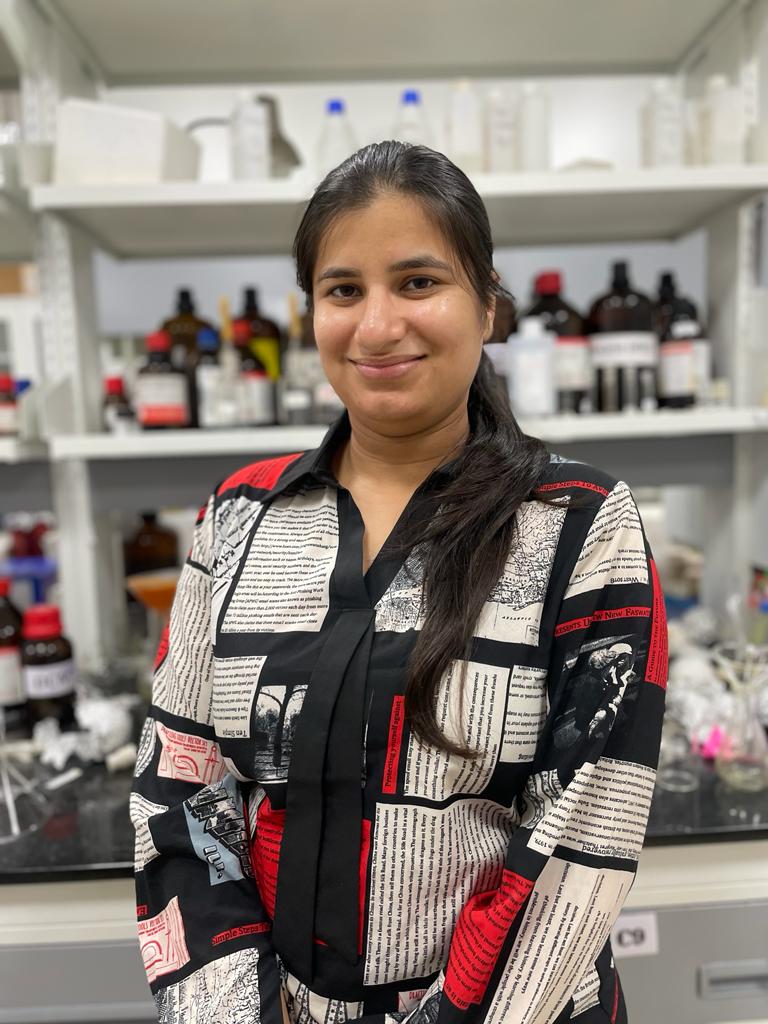
MS. KIRTI
Email: kirti.ph21227@inst.ac.in
Reg. No.: PH21227
-

MR. AMIT KUMAR
Email: amit.ph22203@inst.ac.in
Reg. No.: PH22203
-

MS. SHIVALI DHINGRA
Email: shivali.ph21226@inst.ac.in
Reg. No.: PH21226
-

MS. NEHA SAINI
Email: neha.ph20255@inst.ac.in
Reg. No.: PH20255
-

MS. BHAWNA RAWAT
Email: bhawna.ph20237@inst.ac.in
Reg. No.: PH20237
-

MS. ANJALI VERMA
Email: anjali.ph19241@inst.ac.in
Reg. No.: PH19241
-

MS. SUSHMA KUMARI
Email: sushma.ph21212@inst.ac.in
Reg. No.: PH21212
-
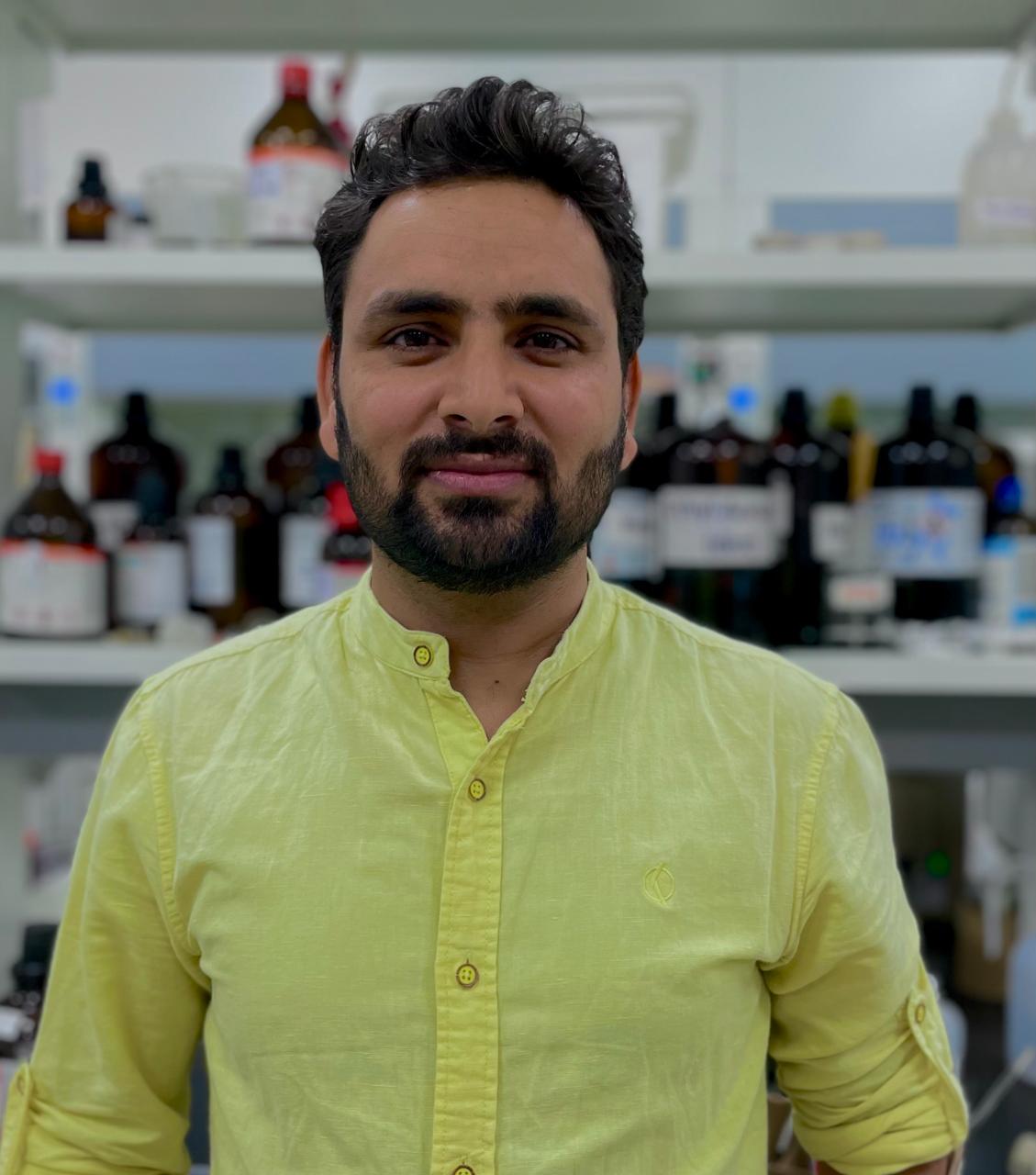
PAVIT KUMAR
Email: pavit.ind1424422@inst.ac.in
Reg. No.: IND142442
Alumni
-

KOUSTAV HALDER
Reg. No.: IN-2024/27
Designation: Intern Student
Jun 2024 - Sep 2024
-

DEEPAK KUMAR CHAUHAN
Reg. No.: IND142341
Designation: Post Docs/RA
Aug 2023 - Mar 2024
-

MR.DEEPAK KUMAR CHAUHAN
Reg. No.: PH17219
Designation: PhD Scholar
Jan 2018 - Feb 2023
-

MR. VENUGOPALA RAO BATTULA
Reg. No.: Ph16213
Designation: PhD Scholar
Aug 2016 - Mar 2022
-
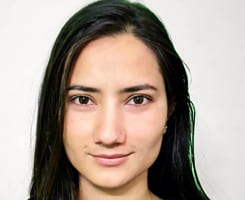
MS.ARPNA JARYAL
Reg. No.: PH17217
Designation: PhD Scholar
Jan 2018 - Nov 2023
-
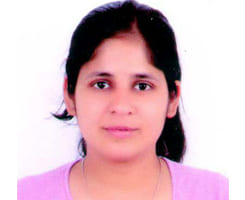
MS. NEHA
Reg. No.: Ph16242
Designation: PhD Scholar
Jan 2017 - Oct 2022
-

MR. SOUMADRI SAMANTA
Reg. No.: PH16206
Designation: PhD Scholar
Aug 2016 - Mar 2022
-

MS. PRANJALI YADAV
Reg. No.: PH15205
Designation: PhD Scholar
Aug 2015 - Dec 2021
-
1.
Oxygen-Linked Polymeric Heptazine for Selective C–C Cleavage in Synergism with Solar Fuel Generation: Unlocking the Full Potential , Bhawna Rawat, Venugopala Rao Battula, Ankita Kumari, Dibyajyoti Ghosh, Kamalakannan Kailasam , ACS Sustainable Chemistry & Engineering , 2024 , 12 , 13124-13136 , https://doi.org/10.1021/acssuschemeng.4c02712 -
2.
Waste Polyethylene-Derived Carbon Dots: Administration of Metal-Free Oxidizing Agents for Tunable Properties and Photocatalytic Hyperactivity , Bramhaiah Kommula, Sagnik Chakraborty, Maqsuma Banoo, Raj Sekhar Roy, Supriya Sil, Abhishek Swarnkar, Bhawna Rawat, Kamalakannan Kailasam, Ujjal K Gautam , ACS Applied Materials & Interfaces , 2024 , 16 , 39470-39481 , https://doi.org/10.1021/acsami.4c0863 -
3.
Molecular engineering of donor-acceptor heptazine-based porous organic polymers for selective photoreduction of CO2 to CO under non-sacrificial conditions in water , Amit Kumar, Pravesh Kumar, Durgesh Pandey, Neha Saini, Kirti Dhingra, Dibyajyoti Ghosh, Kamalakannan Kailasam , Journal of Materials Chemistry A , 2024 , 2024 , DOI https://doi.org/10.1039/D4TA05379F -
4.
Leveraging cooperative photocatalysis for the concurrent production of solar fuels and value-added chemicals: mediated by a metal-free porphyrin-based polymeric framework , Kirti Dhingra, Neha Saini, Amit Kumar, Kamalakannan Kailasam , Journal of Materials Chemistry A , 2024 , https://doi.org/10.1039/D4TA04445B -
5.
Molecular structural engineering of donor–acceptor-based porous organic polymers for sulfide photooxidation in water: a sustainable approach , Neha Saini, Kirti Dhingra, Amit Kumar, Kamalakannan Kailasam , Green Chemistry , 2024 , 26 , 10314-10323 , DOI https://doi.org/10.1039/D4GC03255A -
6.
Understanding the charge transfer dynamics in 3D-1D nanocomposites over solar driven synergistic selective valorization of lignocellulosic biomass: A new sustainable approach , Arpna Jaryal, Ajit Kumar Singh, Shivali Dhingra, Himanshu Bhatt, Manvi Sachdeva, Hirendra N Ghosh, Arindam Indra, Kamalakannan Kailasam , EES Catalysis , 2024 , https://doi.org/10.1039/D4EY00077C -
7.
Unifying CO 2-to-fuel and biomass valorization over a metal-free 2D carbon nitride-fullerene heterostructure: a solar-driven chemical circular economy , Deepak Kumar Chauhan, Anjali Verma, Ayushi Jain, Neha Saini, Pankaj Kumar Prajapati, Chandan Bera, Kamalakannan Kailasam , Journal of Materials Chemistry A , 2023 , 11 , 18672-18678 , https://doi.org/10.1039/D3TA04455F -
8.
Photocatalytic CH Activation: Boosting the Photocarrier Separation Via Ni3v2o8@ G-Cn PN Heterojunction , Anjali Verma, Arpna Jaryal, Venugopala Rao Battula, Madhurima Sarkar, Abhijit Patra, Kamalakannan Kailasam , Available at SSRN 4207326 , 2023 , 10.2139/ssrn.4207326 -
9.
Unravelling the redox behaviour of a carbon nitride polymer-based ternary heterostructure for CO 2 photoreduction promoted by amine coupling , Pankaj Kumar Prajapati, Neha Saini, Deepak Kumar Chauhan, Kamalakannan Kailasam , Journal of Materials Chemistry A , 2023 , 11 , 385-400 , https://doi.org/10.1039/D2TA07642J -
10.
A Ni 3 V 2 O 8@ g-CN nanocomposite-based pn heterojunction: mechanistic insights into photocatalytic activation of the inert C (sp 3)–H bond , Anjali Verma, Arpna Jaryal, Deepak Kumar Chauhan, Venugopala Rao Battula, Madhurima Sarkar, Abhijit Patra, Kamalakannan Kailasam , Sustainable Energy & Fuels , 2023 , 7 , 2727-2739 , https://doi.org/10.1039/D3SE00413A -
11.
Deciphering ligand-controlled charge transfer from a metal–organic framework to cadmium sulfide for enhanced photocatalytic hydrogen evolution reaction , Ajit Kumar Singh, Arpna Jaryal, Sunil Kumar Patel, Deepak Kumar, E Siva Subramaniam Iyer, Kamalakannan Kailasam, Arindam Indra , Journal of Materials Chemistry A , 2023 , 11 , 16724-16733 , https://doi.org/10.1039/D3TA02251J -
12.
A critical insight into porous organic polymers (POPs) and its perspectives for next-generation chemiresistive exhaled breath sensing: a state-of-the-art review , Parthasarathy Srinivasan, Kirti Dhingra, Kamalakannan Kailasam , Journal of Materials Chemistry A , 2023 , 11 , 17418-17451 , https://doi.org/10.1039/D3TA02660D -
13.
Coalescing solar-to-chemical and carbon circular economy: mediated by metal-free porphyrin and triazine-based porous organic polymer under natural sunlight , Neha Saini, Neha Sharma, Deepak Kumar Chauhan, Rishu Khurana, Md Ehesan Ali, Kamalakannan Kailasam , Journal of Materials Chemistry A , 2023 , 11 , 25743-25755 , https://doi.org/10.1039/D3TA05160A -
14.
Extending conducting channels in Fe–NC by interfacial growth of CNTs with minimal metal loss for efficient ORR electrocatalysis , Reeya Garg, Mohit Jaiswal, Kaustubh Kumar, Komalpreet Kaur, Bhawna Rawat, Kamalakannan Kailasam, Ujjal K Gautam , Nanoscale , 2023 , 15 , 15590-15599 , https://doi.org/10.1039/D3NR02706F -
15.
Ultrahigh Photocatalytic Oxygen Reduction to Hydrogen Peroxide by a True Oxygen-Bridged Heptazine Polymer , Venugopala Rao Battula, Bhawna Rawat, Kamalakannan Kailasam , ACS Applied Polymer Materials , 2023 , 5 , 1989-1997 , https://doi.org/10.1021/acsapm.2c02057 -
16.
Metal-Free Triazine-Based Polymeric Network for Solar-to-Chemical Conversion: An Insight into the Aza-Henry Reaction , Neha Sharma, Deepak Kumar Chauhan, Neha Saini, Kamalakannan Kailasam , ACS Applied Polymer Materials , 2023 , 5 , 4333-4341 , https://doi.org/10.1021/acsapm.3c00447 -
17.
Landscaping sustainable conversion of waste plastics to carbon dots and enormous diversity in O2 harvesting, hypoxia, autophagy , Bramhaiah Kommula, Maqsuma Banoo, Raj Sekhar Roy, Supriya Sil, Arjun Kumar Sah, Bhawna Rawat, Sagnik Chakraborty, Pradhyuman Meena, Kamalakannan Kailasam, Ujjal K Gautam , Carbon , 2023 , 213 , 118304 , https://doi.org/10.1016/j.carbon.2023.118304 -
18.
Facile synthesis of cellulose and fly-ash based sustainable nanohybrids for thermal insulation applications , Sourav Sen, Ajit Singh, Kamalakannan Kailasam, Chandan Bera, Sangita Roy , Cellulose , 2023 , 30 , 9127-9145 , https://doi.org/10.1007/s10570-023-05395-2 -
19.
Utilizing the Undesirable Oxidation of Lead-Free Hybrid Halide Perovskite Nanosheets for Solar-Driven Photocatalytic C(sp3)─H Activation: Unraveling the … , Bhawna Rawat, Venugopala Rao Battula, Pabitra Kumar Nayak, Dibyajyoti Ghosh, Kamalakannan Kailasam , ACS applied materials & interfaces , 2023 , 15 , 53604-53613 , https://doi.org/10.1021/acsami.3c14217 -
20.
An insight into the photo-generation of H 2 and a carbon fuel additive from biomass-derived ethanol: boosting the bio-chemical economy , Deepak K Chauhan, Madhurima Sarkar, Abhijit Patra, Kamalakannan Kailasam , Journal of Materials Chemistry A , 2022 , 10 , 22289-22300 , https://doi.org/10.1039/D2TA05967C -
21.
Photocatalytic valorization of furfural to value-added chemicals via mesoporous carbon nitride: a possibility through a metal-free pathway , Deepak K Chauhan, Venugopala R Battula, Arkaprabha Giri, Abhijit Patra, Kamalakannan Kailasam , Catalysis Science & Technology Volume 12 , 2022 , 12 , 144-153 , https://doi.org/10.1039/D1CY01681D -
22.
A critical review on emerging photocatalysts for syngas generation via CO 2 reduction under aqueous media: a sustainable paradigm , Deepak Kumar Chauhan, Neha Sharma, Kamalakannan Kailasam , Materials Advances , 2022 , 3 , 5274-5298 , https://doi.org/10.1039/D2MA00334A -
23.
A metal-free heptazine–porphyrin based porous polymeric network as an artificial leaf for carbon-free solar fuels , Sunil Kumar, Venugopala Rao Battula, Neha Sharma, Soumadri Samanta, Bhawna Rawat, Kamalakannan Kailasam , Journal of Materials Chemistry A , 2022 , 10 , 14568-14575 , DOI https://doi.org/10.1039/D2TA01646J -
24.
Biomass-derived cellulose nanofibers and iron oxide-based nanohybrids for thermal insulation application , Sourav Sen, Ajit Singh, Kamalakannan Kailasam, Chandan Bera, Sangita Roy , Nanoscale Advances , 2022 , 4 , 3381-3390 , DOI https://doi.org/10.1039/D2NA00010E -
25.
Nontoxic metal-free visible light-responsive carbon nitride quantum dots cause oxidative stress and cancer-specific membrane damage , Pranjali Yadav, Mimansa, Kamalakannan Kailasam, Asifkhan Shanavas , ACS Applied Bio Materials , 2022 , 5 , 1169-1178 , https://doi.org/10.1021/acsabm.1c01219 -
26.
Biodegradable Protein-Stabilized Inorganic Nanoassemblies for Photothermal Radiotherapy of Hepatoma Cells , Pranjali Yadav, Shubhra Chaturvedi, Samir Kumar Biswas, Rohit Srivastava, Kamalakannan Kailasam, Anil Kumar Mishra, Asifkhan Shanavas , ACS omega , 2022 , 7 , 8928-8937 , https://doi.org/10.1021/acsomega.1c07324 -
27.
Nontoxic in vivo clearable nanoparticle clusters for theranostic applications , Pranjali Yadav, Mimansa, Rafika Munawara, Kanchan Kapoor, Shubhra Chaturvedi, Kamalakannan Kailasam, Samir Kumar Biswas, Dhirendra Bahadur, Rohit Srivastava, Anil Kumar Mishra, Asifkhan Shanavas , ACS Biomaterials Science & Engineering , 2022 , 8 , 2053-2065 , https://doi.org/10.1021/acsbiomaterials.1c01579 -
28.
Recent developments in biomass derived cellulose aerogel materials for thermal insulation application: a review , Sourav Sen, Ajit Singh, Chandan Bera, Sangita Roy, Kamalakannan Kailasam , Cellulose , 2022 , 29 , 4805-4833 , https://doi.org/10.1007/s10570-022-04586-7 -
29.
A Light(er) Approach for the Selective Hydrogenation of 5‐Hydroxymethylfurfural to 2,5‐Bis(hydroxymethyl)furan without External H2 , Arpna Jaryal, Battula Venugopala Rao, Kamalakannan Kailasam , ChemSusChem , 2022 , 15 , e202200430 , https://doi.org/10.1002/cssc.202200430 -
30.
Ru quantum dots decorated graphitic carbon nitride (Ru-QDs@ g-CN) for chemi-resistive sensing of 3-methyl-1-butanol at room temperature , Soumadri Samanta, Parthasarathy Srinivasan, John Bosco Balaguru Rayappan, Kamalakannan Kailasam , Sensors and Actuators B: Chemical , 2022 , 368 , 132060 , https://doi.org/10.1016/j.snb.2022.132060 -
31.
Cellulose nano-fiber and fly-ash based nanohybrids: a facile and sustainable thermal insulating material , Sourav Sen, Ajit Singh, Kamalakannan Kailasam, Chandan Bera, Sangita Roy , Cellulose , 2022 , https://doi.org/10.21203/rs.3.rs-2245372/v1 -
32.
Solar driven photocatalytic hydrogen evolution using graphitic-carbon nitride/NSGQDs heterostructures , Soumadri Samanta, Venugopala Rao Battula, Neha Sardana, Kamalakannan Kailasam , Applied Surface Science , 2021 , 563 , 150409 , https://doi.org/10.1016/j.apsusc.2021.150409 -
33.
Insights into gC 3 N 4 as a chemi-resistive gas sensor for VOCs and humidity–a review of the state of the art and recent advancements , Parthasarathy Srinivasan, Soumadri Samanta, Akshay Krishnakumar, John Bosco Balaguru Rayappan, Kamalakannan Kailasam , Journal of Materials Chemistry A , 2021 , 9 , 10612-10651 , https://doi.org/10.1039/D0TA12500H -
34.
Understanding the role of soft linkers in designing hepatzine-based polymeric frameworks as heterogeneous (photo) catalyst , Sunil Kumar, Venugopala Rao Battula, Neha Sharma, Soumadri Samanta, Kamalakannan Kailasam , Journal of Colloid and Interface Science , 2021 , 588 , 138-146 , https://doi.org/10.1016/j.jcis.2020.12.040 -
35.
A Tailored Heptazine‐Based Porous Polymeric Network as a Versatile Heterogeneous (Photo) Catalyst , Neha Sharma, Sunil Kumar, Venugopala R Battula, Anu Kumari, Arkaprabha Giri, Abhijit Patra, Kamalakannan Kailasam , Chemistry–A European Journal , 2021 , 27 , 10649-10656 , https://doi.org/10.1002/chem.202100595 -
36.
Photocatalytic integrated production of hydrogen and imines from aromatic amines via Ni-mesoporous carbon nitride: An acceptorless dehydrogenative pathway , Deepak Kumar Chauhan, Venugopala Rao Battula, Sanjhal Jain, Kamalakannan Kailasam , Journal of Cleaner Production , 2021 , 307 , 127162 , https://doi.org/10.1016/j.jclepro.2021.127162 -
37.
Single molecular precursors for CxNy materials-Blending of carbon and nitrogen beyond g-C3N4 , Sunil Kumar, Venugopala Rao Battula, Kamalakannan Kailasam , Carbon , 2021 , 183 , 332-354 , https://doi.org/10.1016/j.carbon.2021.07.025 -
38.
Metal-Free Heptazine-Based Porous Polymeric Network as Highly Efficient Catalyst for CO2 Capture and Conversion , Neha Sharma, Bharat Ugale, Sunil Kumar, Kamalakannan Kailasam , Frontiers in Chemistry , 2021 , 9 , 737511 , https://doi.org/10.3389/fchem.2021.737511 -
39.
Designing nanofibrillar cellulose peptide conjugated polymeric hydrogel scaffold for controlling cellular behaviour , Vijay Kumar Pal, Rashmi Jain, Sourav Sen, Kamalakannan Kailasam, Sangita Roy , Cellulose , 2021 , 28 , 10335-10357 , https://doi.org/10.1007/s10570-021-04176-z -
40.
A metal-free mesoporous g-C3N4 nanosheets for selective and sensitive recognition of ethanol at room temperature , Parthasarathy Srinivasan, Soumadri Samanta, John Bosco Balaguru Rayappan, Kamalakannan Kailasam , Sensors and Actuators B: Chemical , 2021 , 349 , 130828 , https://doi.org/10.1016/j.snb.2021.130828
-
1.
Photocatalytic generation of H2 and a carbon fuel additive from biomass-derived ethanol , Deepak K Chauhan, Kamalakannan Kailasam, Madhurima Sarkar, Abhijit Patra , 2023 , https://doi.org/10.1039/D2TA05967C -
2.
Photoelectrochemical Ammonia Production , Arpna Jaryal, Anjali Verma, Kamalakannan Kailasam , Photoelectrochemical Generation of Fuels , 2022 , 177-200 , 10.1201/9781003211761-6 -
3.
Carbon nitrides (g-C3N4) and covalent triazine frameworks (CTFs) , Devadutta Nepak, Vijay K Tomer, Kamalakannan Kailasam , 2018 , 332 , https://doi.org/10.1039/9781788013116-00067 -
4.
Metal‐Free Organic Semiconductors for Visible‐Light‐Active Photocatalytic Water Splitting , ST Nishanthi, Battula Venugopala Rao, Kamalakannan Kailasam , Visible Light‐Active Photocatalysis: Nanostructured Catalyst Design, Mechanisms, and Applications , 2018 , 329-363 , https://doi.org/10.1002/9783527808175.ch12 -
5.
Visible-light heterogeneous catalysts for photocatalytic CO2 reduction , Sanyasinaidu Boddu, ST Nishanthi, Kamalakannan Kailasam , 2018 , 421-446 , https://doi.org/10.1002/9783527808175.ch12
-
1.
Metals supported on covalent organic frameworks as heterogeneous catalysts , Carine E Chan-Thaw, Michael Bojdys, Phisan Katekomol, Kamalakannan Kailasam, Regina Palkovits, Ferdi Schueth, Alberto Villa, Laura Prati, Arne Thomas , 2010/8/22 , 240
“CRSI Bronze Medal” for the year 2024 by Chemical Research Society of India"
“MRSI Medal” for the year 2021 by Materials Research Society of India
Selected as one of the “Emerging Investigator in Materials Chemistry, 2018” by Journal of Materials Chemistry A, Royal Society of Chemistry, UK
Associate Editor, Frontiers in Chemistry (Frontiers), Switzerland
Project Investigator, Sustainable Energy Vertical, DRIIV – a Science and Technology Cluster, an initiative of Office of Principal Scientific Adviser, Govt of India
Max Planck Fellowship for Postdoctoral Research, Max Planck Institute for Colloids and Interfaces-Potsdam, Germany – 2009
IGCAR-DAE Junior Research Fellow (JRF), IGCAR-Kalpakkam, Tamil Nadu – 2004
DFG (German Research Council) Doctoral Fellowship, University of Stuttgart – 2004
Best Outgoing Post-Graduate Student in Chemistry, Bishop Heber College, Bharathidasan University, Tiruchirappalli, Tamil Nadu – 2002
Associate Professor (Scientist-E):Institute of Nano Science & Technology, Mohali, India (April 2015 to December 2019 )
Postdoctoral Research Fellow: Technical University of Berlin, Berlin, Germany (February 2010 to April 2015 )
Postdoctoral Research Fellow:Max Planck Institute of Colloids and Interfaces, Potsdam-Golm, Germany (February 2009 to January 2010 )
Professor (Scientist-F):Institute of Nano Science & Technology, Mohali, India; (January 2020 – December 2023)
-
Title: Photocatalytic-driven Hydrogen Generation and Cellulosic-Biomass Conversion using Mesoporous Carbon Nitrides
Funding Amount: 35.85 lakhs
Funding Agency: DST-SERB-ECR
Additional Info: Completed
-
Title: Biomass Derived Nanostructured Cellulose Aerogel Materials for Thermal Insulation in Energy Efficient Smart Buildings
Funding Amount: 179.4 lakhs
Funding Agency: DST-CERI
Additional Info: Completed
-
Title: Prototype Large-Scale Reactor for Simultaneous Production of H2 and Fine Chemicals under Natural Sunlight
Funding Amount: 1234 lakhs
Funding Agency: DST-Nano Mission-NATDP
Additional Info: Completed
-
Title: Nanoporous Carbon Nitride based Organic Polymers for CO2 Activation and Conversion to Organic Carbonates
Funding Amount: 30 Lakhs
Funding Agency: TATA STEEL
Additional Info: Completed
-
Title: Pilot Scale – Nanoporous Carbon Nitride based Organic Polymers for CO2 Activation and Production of Organic Carbonates
Funding Amount: 19.68 Lakhs
Funding Agency: TATA STEEL
Additional Info: Completed
-
Title: Development of single catalytic system for photocatalytic hydrogen production and thermal CO2 conversion
Funding Amount: 56.38 Lakhs
Funding Agency: Bharat Petroleum Corporation Limited
Additional Info: Ongoing
-
Title: Exploring Heptazine based Functional Materials for Solar Fuel Generation
Funding Amount: 135 Lakhs
Funding Agency: Indo-French Centre for the Promotion of Advanced Research, CEFIPRA
Additional Info: Approved
-
Title: Insight study into the photo-redox catalysis for simultaneous CO2 reduction and biomass oxidation: Boosting sustainable economy
Funding Amount: 65.93 Lakhs
Funding Agency: DST-SERB-CRG
Additional Info: Approved
-
Title: Method development for measurement of thermal properties (especially thermal conductivity) for heat transfer materials at higher temperature
Funding Amount: 65 Lakhs
Funding Agency: Indian Oil Corporation Limited
Additional Info: Completed
